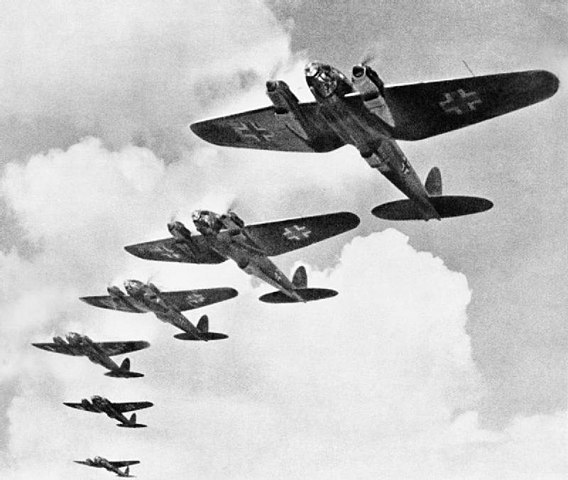World War II(Part 4)
European treaties The United Kingdom, France and Italy formed the Stresa Front in April 1935 in order to contain Germany, a key step towards military globalisation; however, that June, the United Kingdom made an independent naval agreement with Germany, easing prior restrictions. The Soviet Union, concerned by Germany's goals of capturing vast areas of Eastern Europe, drafted a treaty of mutual assistance with France. Before taking effect, though, the Franco-Soviet pact was required to go through the bureaucracy of the League of Nations, which rendered it essentially toothless.[22] The United States, concerned with events in Europe and Asia, passed the Neutrality Act in August of the same year.[23] Hitler defied the Versailles and Locarno Treaties by remilitarising the Rhineland in March 1936, encountering little opposition due to the policy of appeasement.[24] In October 1936, Germany and Italy formed the Rome–Berlin Axis. A month later, Germany and Japan signed the Anti-Comintern Pact, which Italy joined the following year.[25] Asia The Kuomintang (KMT) party in China launched a unification campaign against regional warlords and nominally unified China in the mid-1920s, but was soon embroiled in a civil war against its former Chinese Communist Party allies[26] and new regional warlords. In 1931, an increasingly militaristic Empire of Japan, which had long sought influence in China[27] as the first step of what its government saw as the country's right to rule Asia, staged the Mukden Incident as a pretext to invade Manchuria and establish the puppet state of Manchukuo.[28] China appealed to the League of Nations to stop the Japanese invasion of Manchuria. Japan withdrew from the League of Nations after being condemned for its incursion into Manchuria. The two nations then fought several battles, in Shanghai, Rehe and Hebei, until the Tanggu Truce was signed in 1933. Thereafter, Chinese volunteer forces continued the resistance to Japanese aggression in Manchuria, and Chahar and Suiyuan.[29] After the 1936 Xi'an Incident, the Kuomintang and communist forces agreed on a ceasefire to present a united front to oppose Japan.
